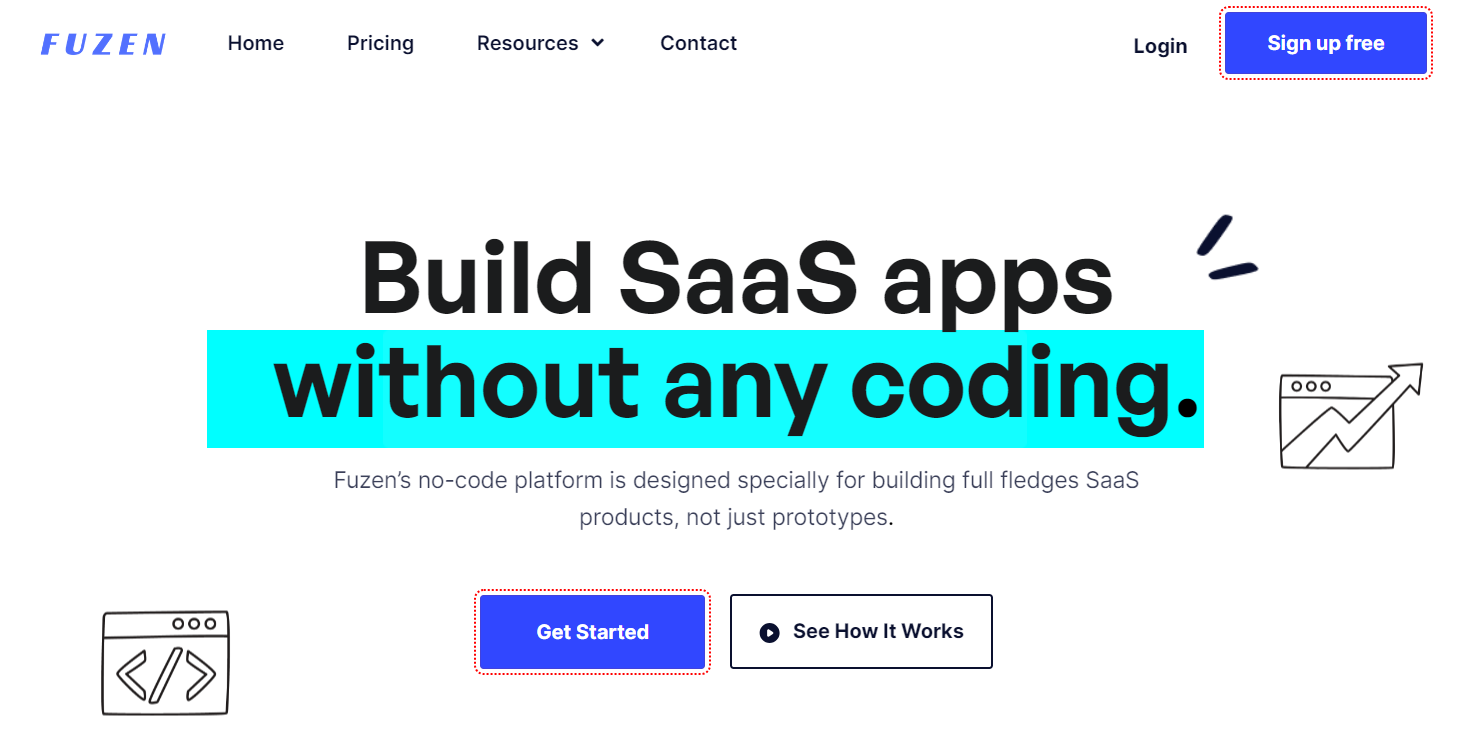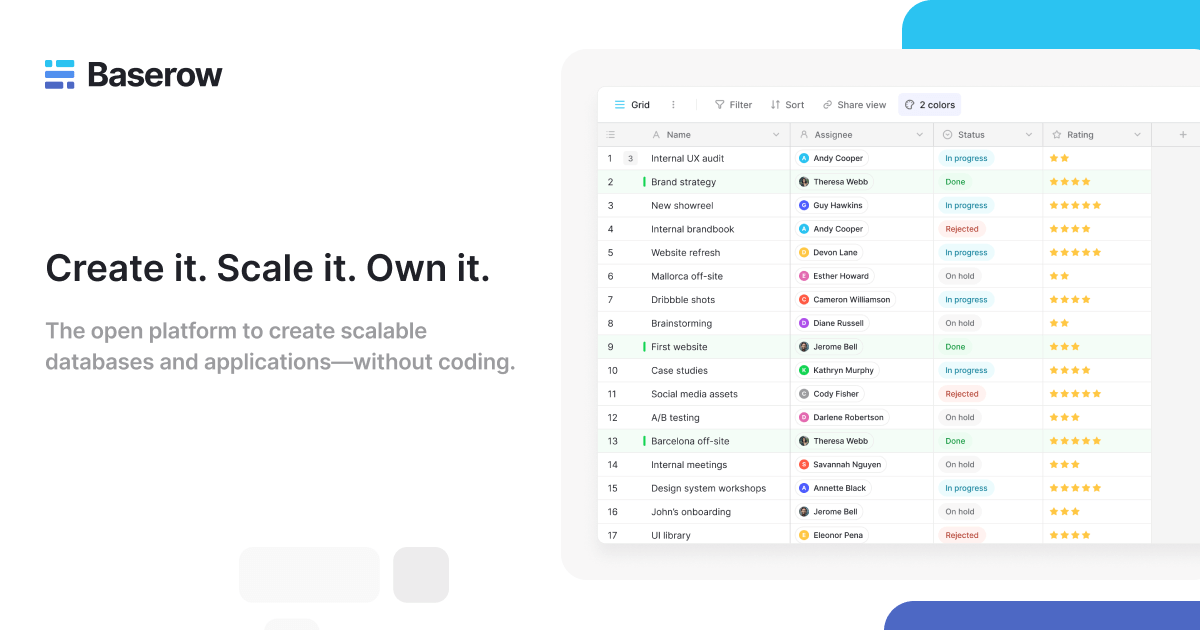Unlocking the Possible of Scalable Databases: No Coding Required for Seamless Data Combination and Management
The introduction of no-code remedies is changing just how companies approach scalable databases, making it possible for smooth information assimilation and management without the need for substantial coding skills. As businesses seek to harness the power of their information, the vital functions and popular tools that facilitate this transition warrant closer examination.
Understanding Scalable Databases
Just how do scalable data sources accommodate the growing needs of modern-day applications? Scalable data sources are made to handle boosting volumes of information and individual requests without sacrificing efficiency. They attain this through two key methods: vertical scaling and straight scaling. Upright scaling, or scaling up, involves including a lot more resources, such as CPU and RAM, to an existing server. Alternatively, straight scaling, or scaling out, involves adding a lot more web servers to disperse the lots, enabling better adaptability and resilience.
Along with scaling approaches, scalable data sources often integrate innovative building functions, such as sharding and replication. Sharding splits data right into smaller sized, convenient pieces, allowing parallel handling and lowering response times. Replication guarantees data availability and longevity by producing copies of information throughout multiple nodes, safeguarding versus prospective data loss.
In addition, modern-day scalable databases take advantage of cloud computing innovations, making it possible for vibrant resource appropriation based on demand. This versatility enables organizations to react promptly to fluctuating workloads, guaranteeing ideal efficiency and individual experience. As businesses significantly count on data-driven decision-making, understanding scalable data sources becomes essential for using their capacity in supporting contemporary applications.
Benefits of No-Code Solutions
As companies increasingly take on scalable databases to handle their growing data demands, the need for easy to use advancement tools has also surged. No-code services are becoming a crucial element in this landscape, supplying numerous key benefits that improve functional performance and accessibility.

Second of all, these services dramatically accelerate the growth process. By removing the requirement for coding, companies can rapidly model applications, iterate on designs, and release options in a fraction of the moment needed by conventional methods. This dexterity enables businesses to react swiftly to market needs and changing problems.
Furthermore, no-code platforms usually come furnished with pre-built themes and integration capacities, simplifying the connection with existing systems. This minimizes the complexity traditionally connected with information combination, inevitably lowering the overall expense of possession. As an outcome, companies can concentrate on leveraging data understandings instead of obtaining stalled in technological ins and outs, maximizing their critical capacity.
Secret Attributes for Information Assimilation
Effective information combination is crucial for companies seeking to harness the complete capacity of their scalable databases. Trick functions that facilitate smooth information assimilation consist of robust information adapters, automated data mapping, and real-time information synchronization.
Durable data adapters allow organizations to connect various information sources, whether they stay on-premises or in the cloud, ensuring detailed accessibility to varied datasets - no-code. Automated data mapping streamlines the procedure of lining up inconsonant data layouts and structures, enabling for quicker and a lot more exact integration procedures. This feature lessens the need for hand-operated intervention, minimizing the possibility for errors
Real-time information synchronization is one more crucial attribute that guarantees data uniformity across platforms. By updating information in real-time, organizations can keep a precise and current view of their info landscape, which is important for timely decision-making. Additionally, user-friendly dashboards and aesthetic analytics enhance the presence of integrated information, permitting stakeholders to acquire workable understandings easily.
Finally, information governance abilities make certain conformity with regulations and internal policies, protecting sensitive information while promoting a society of information honesty. Collectively, these functions empower organizations to achieve efficient and effective information combination.
Popular No-Code Devices Available
Organizations increasingly count on no-code devices to improve their information assimilation procedures and streamline process. These platforms get rid of the need for comprehensive programs expertise, making it possible for users to produce applications and manage information with user-friendly visual interfaces. Amongst the most preferred no-code devices are Airtable, Zoho Designer, and Bubble, each offering distinct attributes customized for numerous business demands.
Airtable combines the simplicity of spread sheets with the capability of data he has a good point sources, allowing customers to arrange and collaborate on data effectively. Zoho Designer provides a comprehensive suite of customizable applications, enabling users to integrate and automate operations with other Zoho products perfectly. Bubble attracts attention for its capacity to produce advanced internet applications without coding, dealing with start-ups and business alike.
In addition, devices like Zapier and Integromat promote automated process by integrating numerous applications, allowing customers to connect data resources effortlessly. These no-code services not just conserve time yet also encourage teams to concentrate on critical efforts rather than technical obstacles. As companies remain to accept digital makeover, the fostering of no-code tools is set to reinvent the means information combination and administration are approached, driving performance and advancement.
Real-World Use Situations
Numerous markets have efficiently implemented no-code tools to attend to particular challenges and boost functional performance. In the healthcare field, as an example, service providers make use of no-code systems to simplify patient document administration and appointment scheduling. By incorporating different information sources without considerable coding, health care specialists can focus much more on client treatment instead of management tasks.
In retail, organizations take advantage of no-code data sources to take care of inventory and sales data in actual time. no-code. This allows for quick decision-making relating to supply degrees and advertising methods, inevitably boosting customer contentment and sales performance
Furthermore, banks have taken on no-code services to automate conformity coverage and data analysis, accelerating and decreasing hand-operated mistakes response times to regulatory modifications.

These real-world use cases show the versatility and efficiency of no-code devices in numerous fields, showing that scalable data sources can drive development reference and functional performance without the requirement for considerable programming understanding.
Final Thought
In verdict, the combination of no-code options right into scalable data source monitoring represents a substantial advancement in data managing capacities. By helping with smooth connections in between diverse data sources and automating operations, these devices encourage companies to effectively handle growing information volumes without the need for technical know-how. The resultant improvement in functional efficiency and data-driven decision-making emphasizes the transformative capacity of these innovative strategies within various sectors, inevitably sustaining critical goals and cultivating business development.
Replication ensures data availability and toughness by creating duplicates of information across several nodes, guarding versus potential information loss. - no-code
Robust data connectors enable companies to link different data sources, whether they live on-premises or in the cloud, making certain thorough accessibility to varied datasets. Automated data mapping streamlines the process of straightening diverse information layouts and structures, permitting for quicker and extra accurate assimilation procedures.Real-time information synchronization is another important feature that guarantees data uniformity across platforms. By assisting in seamless links between varied information sources and automating operations, these her latest blog devices equip organizations to successfully take care of expanding data quantities without the need for technological proficiency.